[Part 11 of 11]
Enniscrone
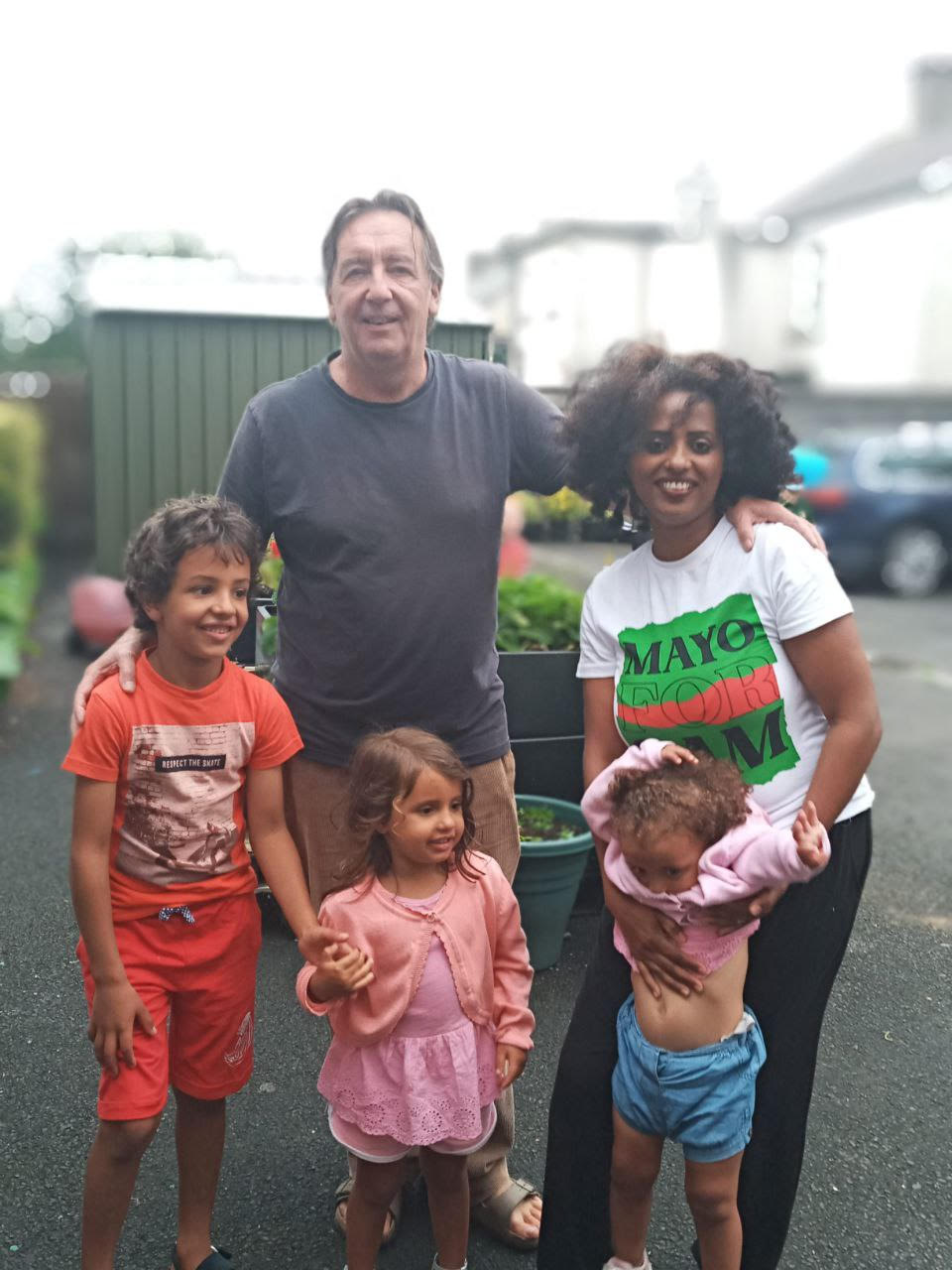
Finian with wife Cristina and their children: Musa (l), Marie, Brigid.
Finian and I first encountered one another at King’s College in Cambridge, in 1993. England’s national solidarity committee with Cuba had invited me on a tour to speak about Cuba and my first of six books about the revolutionary country, “Backfire: The CIA’s Biggest Burn”. I was on leave from my work in Cuba touring several countries in Europe and California. [PDF] Backfire by Ron Ridenour Download Book (simplicityhsd.com) or Back Fire: the CIS’s Biggest Burn: Amazon.co.uk: Ridenour, Ron: 9780962497513: Books
We didn’t have contact again until last year when Finian reached me after reading an article I wrote. It deals with the US/UK conspiring to end any semblance of actual “free press” by imprisoning Julian Assange for the “crime” of publishing their many crimes against humanity. Finian is now writing for alternative media after 15 years with the mass media, which limited his ability to write the truth about what Western governments want to hide. We both now write for various websites, and we form a little team at one of them, Strategic Culture Foundation (strategic-culture.org).
Finian’s neighbor across the street is McNutley’s Bar & Accommodation where we stayed. Authenticity oozed throughout, albeit sans manual light switches. Alongside the pub downstairs is Caroline’s Kitchen. Overnight B&B guests receive a full Irish breakfast, all we can eat of local produced homemade food, including freshly baked breads. After a day’s activities, Finian and I would have a couple Guinnesses at the bar.
One afternoon, Finian and I fished from the nearby pier and along the coastal walk. Although we didn’t catch anything, fishermen often pull in mackerel, sea trout, grey mullet, pollack, sea bass, even Atlantic salmon. Salmon are sometimes abundant in nearby rivers too, an attraction for increasing numbers of national and international tourists.
Another day, Finian and I shared our life stories walking by the sea and on hilltops. We came upon a meter-deep hole below the ruins of an old castle. We walked to the store where the local councillor works. Soon after Finian told him about the hole it was covered over. In this town of about 2000 permanent resisdents people know one another. Whatever crime, or irritating mischief may occur, one policeman, who does bear a weapon, can handle.
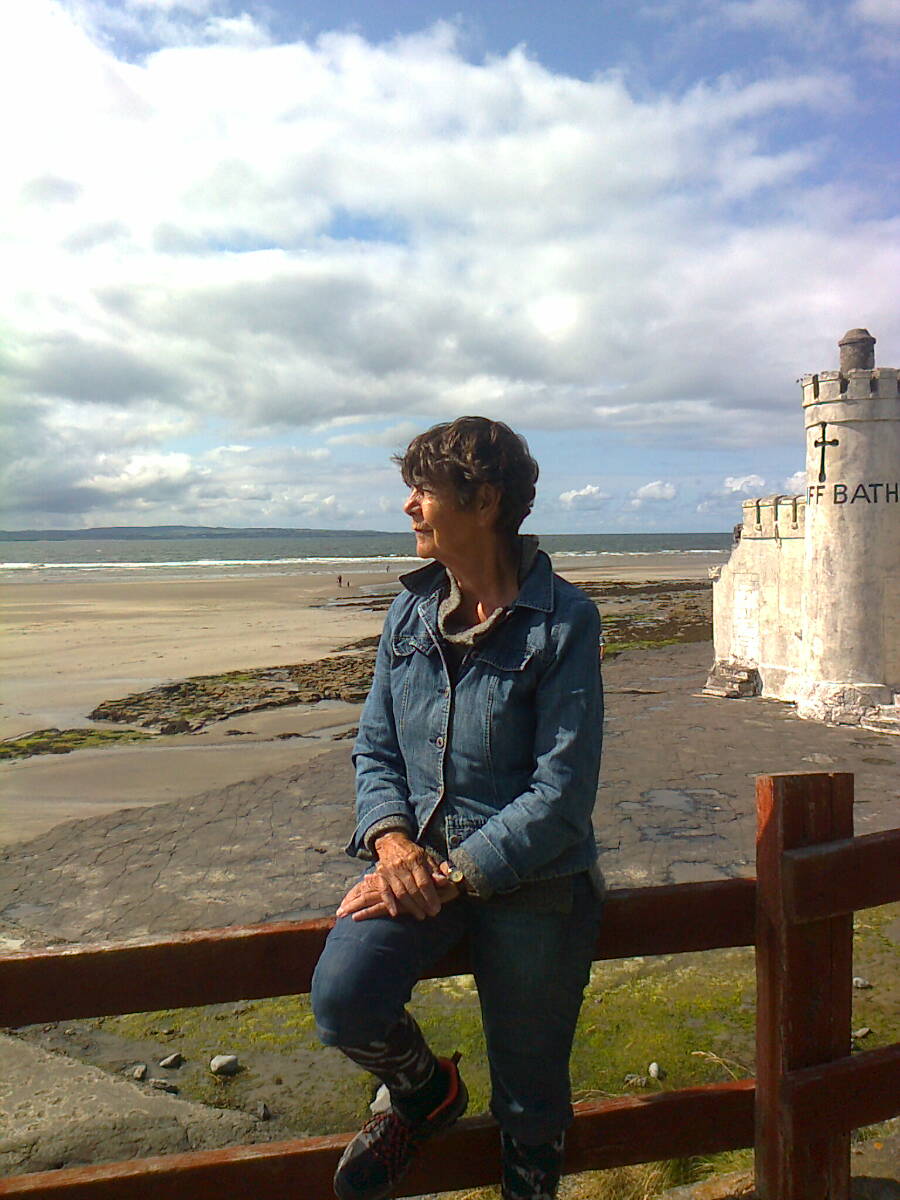
Jette by Kilcullen’s original Seaweed Bath House from mid-19th century. Seaweed is gathered and used in the modern quaint bathhouse just above.
Jette and I treated ourselves to a natural solace. Immersed in a large bathtub filled with warmed, unpolluted Atlantic seawater, we inhale the bladder wrack algae’s oils fresh aroma. We rub the silky plant over our heads and bodies. Stress melts as the sea plant’s iodine works its wonders. To heighten relaxation, a steam bath stands between the tubs. One’s head rests free above the oblong wooden enclosure, which operates like a sauna. From sauna to tub and reverse. After an hour, one teeters slowly out to find, perhaps, a Guinness draft in one of several pubs.
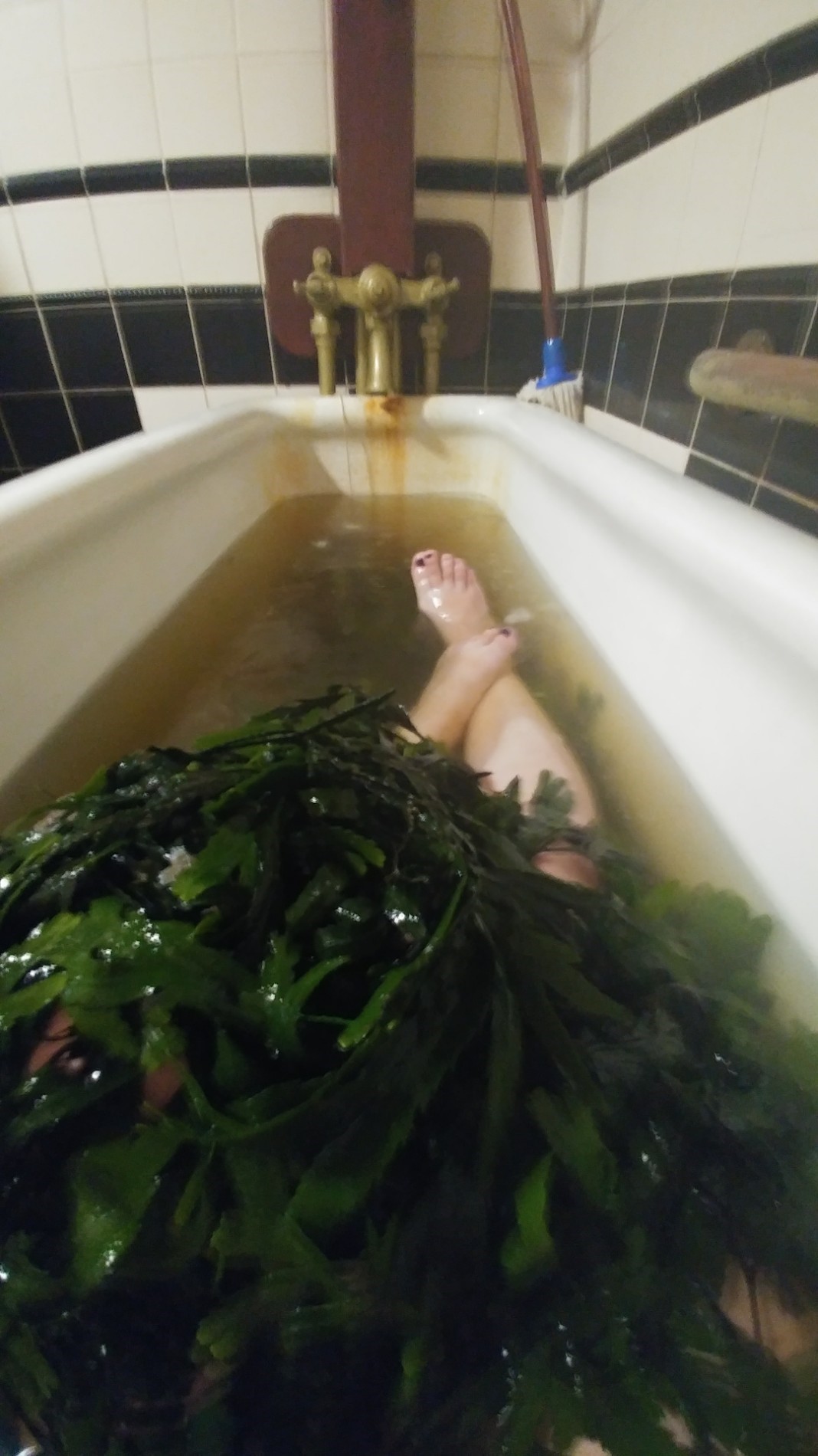
Seaweed Baths Enniscrone HomePage (kilcullenseaweedbaths.net)
(232) Kilcullen’s Seaweed Bath – YouTube
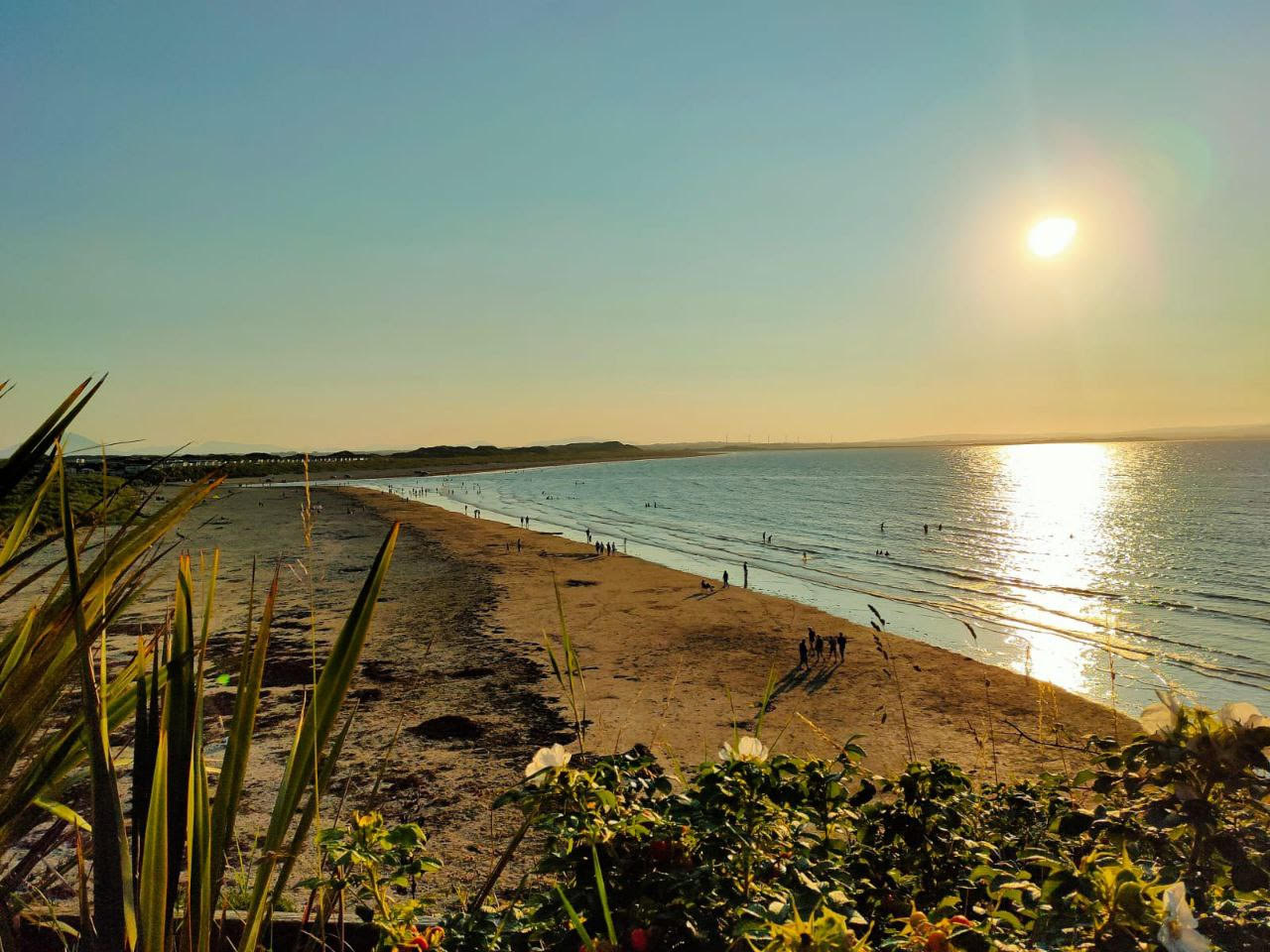
Enniscrone is famous for its fabulous sunsets. When the tide comes in, surfers from far and wide come to enjoy riding the waves. Enniscrone has surfboard and stand-up-paddle schools.
Vikings in Enniscrone
Vikings are still honored as heroes in Denmark, in Scandinavia generally, Britain and even Ireland, despite increasing evidence that they were ruthless invaders: plundering, murdering, raping and enslaving. Ten percent of the population where Vikings established settlements were slaves. Their labor made it possible for Vikings to build the fastest and longest sailing ships and the best steel swords. Vikings initiated mercantile market capitalism with the slave trade long before Spain and other nations did during the middle ages. They sold the majority of people they enslaved to other well-to-do people, which helped afford Vikings’ marauding.
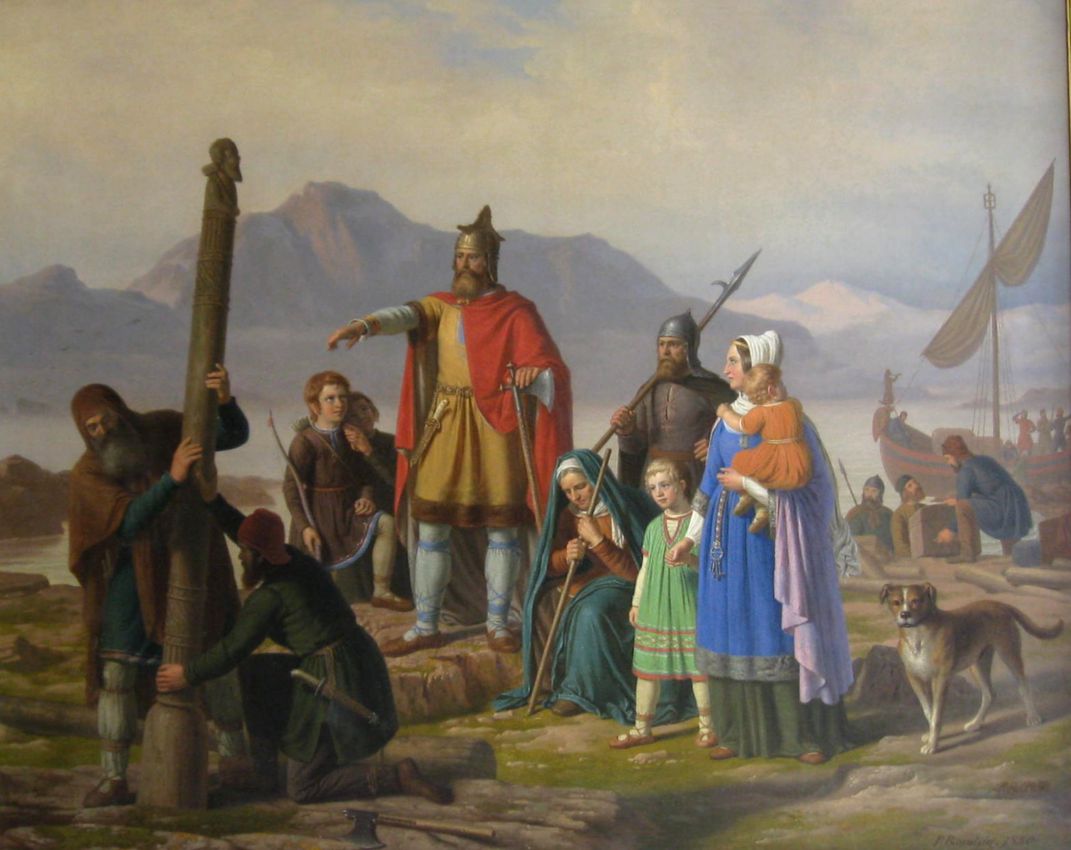 Viking warlord Ingólfr Arnarson commands slaves on Iceland. 19th century painting by Peter Raadsig. Wikimedia Commons. History of Iceland – Wikipedia
Viking warlord Ingólfr Arnarson commands slaves on Iceland. 19th century painting by Peter Raadsig. Wikimedia Commons. History of Iceland – Wikipedia
In the Early Viking period (790s), Scandinavian warriors invaded Dublin and Cork. From there they expanded throughout the northern regions, murdering monks and civilian Christians, raping women, and taking some to bear children, producing more warriors to sustain battles and slavery. Vikings slit people’s throats like contemporary Islamic State fanatics.
In 874, Viking warlord Ingólfr Arnarson led captured Irish slaves to construct the first settlement on Iceland at what became Reykavik. Irish slaves rose up and killed some Vikings, including a leading warrior, Hjörleifr Hróömsarsson. They then fled to the nearby volcanic island, Vestmannaeyjar. Arnarson and his men hunted them down and slaughtered them. The islands got their name from this massacre. Vestmenn is a word that Norse men then used for Irishmen. [i]
I encountered Irish (and Icelandic) people who think well of the Vikings, because they were “clever” sailors and craftsmen, and women Vikings had quite a lot of freedom. Fifty percent of Irish DNA is Norse. Some Irish I met, however, realize that Vikings were brutal and oppressive invaders, and some local people had defended themselves against the brutes. There is such evidence at Enniscrone’s golf course where a Viking raiding party was defeated and their bones buried. Golfers putty below the “Hill of Corpses” (Cnoc nag Corp in Gaelic) at Emerald Island golf course.
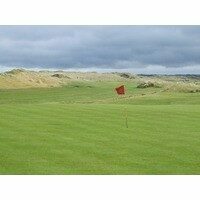
“hill of corpses” enniscrone golf course – Bing images
Cultural Evening
Our farewell-until-next-encounter cultural evening encircled a fireplace outside Finian and Gina’s apartments. Gina and her sister Renée, Nuala, Bryan, Finian-Cristina-Musa, Jette and I gathered as dusk settled in. We read poems and sang songs. Some poems and songs were our own, while Gina and Renée read W.B. Yeats poems. One of the greatest of English-writing poets, Yeats won the Nobel Literature Prize (1923). He was also active in the liberation movement. Born in 1865, he died the year of my birth (1939) and is buried in a nearby County Sligo village, Drumcliff.
During Finian’s transition from mass media journalism to people’s journalism, he earned a modest living for a couple years playing guitar and singing songs—many he wrote—as a street performer. Ireland is famous for its street performers: singers, musicians, dancers, comedians, and thespians.
One of Finian’s favorite songs he wrote is, “The Revolution’s Here”:
Let’s go down south to Mexico, hey let’s go
Don’t you know the peasants could use your words of revolution
Cos you studied Karl Marx, Mao Tsetung and Ho Chi Minh
And you follow the people’s struggle everywhere
Except the land you’re in
But hey, hey brother don’t you know
The Revolution’s here
Hey, hey brother don’t you know
The revolution’s here
Starts right here now
Now don’t get me wrong, I know you got to think big
And fighting the multinationals and banks is the lingo I dig
But we’ve gotta have some action right now and we gotta have it here
So you can start this revolution by buying me a beer….
In this mood, I read Liam Mac Uistin’s “We Saw a Vision” (see first part).
Nuala followed suit and won our hearts with her “Something Amiss”.
I remember frogs and hairy mollies
proud workers whistling the whole day through
I remember when ordinary people had time
a freedom in the air
colorful characters in every townland
‘imithe’ (gaelic for ‘gone’)
Now I know a land of microwaves and pest control
a land of absent wildlife
her people rushing
brain fog clinging
servitude and sanitized personalities
the tyranny of forced positivity
questions deemed abhorrent
as the scheming suits rule
shouting their mantras of
‘money is king’
‘time is money’
While the earth sobs for her children!
Bryan sang the famous pining emigration song, Spancil Hill, written by Michael Considine who was born in County Clare. Due to the Great Famine (potato crop blithe), gouging rents demanded by greedy landlords, and vast unemployment, Michael became one of a million Irish forced to emigrate. Considine went to the U.S., in 1850, hoping to earn enough to send for his sweetheart. However, he soon died, age 23, from exhausting work. Spancil Hill – Christy Moore
Jette, sang a Danish song, “Jeg Ved en Lærkerede” (I know a Lark Nest), about a mother lark and her nest hidden from children and foxes in a heath. Melody by the famous composer Carl Nielsen.
I followed with a little poem of mine, Salt to David:
For every grain of salt we have
they have a boulder
For every Goliath they have
we have a stone
Finian closed our evening with his “Don’t Be A Stranger”, in my honor:
It could be a long time
Way on down the line
When we meet again my friend
But when you knock on my door
One thing is for sure
Don’t be a stranger, don’t be a stranger
Cos friends are friends right to the end
Friends are friends no need to pretend
So when you knock on my door
One thing is for sure
Don’t be a stranger, don’t be a stranger
Now you could have made it
Or you may be faded
When we meet again my friend
But when you come back this way
This is all I’ll say
Don’t be a stranger, don’t be a stranger…
As we were leaving, seven year-old Musa told Jette he had been glad being with us. He folded a letter with a drawing he made about our visit into a boat, suggesting we might return on it.
Following our cultural evening, Nuala’s friend Martin wanted to contribute to celebrating Che. He made me aware of Christy Moore, Ireland’s greatest living musician, so awarded in 2007. Moore sings Ewan McColl’s song, “Compañeros”, in the album “This is the Day”. The song is in honor of the Cuban revolution led by Fidel Castro and Che Guevara. Christy, like many Irish musicians (such as the longest recording group, the Dubliners), writes many strong working class and liberationist songs. (223) Compañeros – YouTube
-30-
Afterword: Che’s Son and Ron
A tanned white man of medium height with shoulder-length black hair met me at the wrought iron apartment building gate. His dark eyes shone friendly into mine. His open expression and quiet voice put me at ease. There was something magnetic, something far away familiar with Omar Lopéz Pérez.
I had just returned to Cuba, in 2008, for several months to see what had become of the country and to celebrate its revolutionary 50th anniversary. In 1987, the Ministry of Culture had asked me to write and translate for its foreign publishing house, Editorial José Martí, and later Prensa Latina, which Che had launched during the revolutionary war. I worked in Cuba from 1988-96. A mutual colleague had suggested that Omar could translate a book published in English, “Cuba at Sea”, about my volunteer seamanship on five Cuban ships over a six-month period. Cuba at Sea – Resistance Books
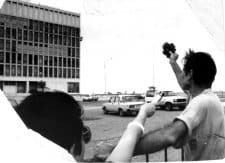
Here I am before the U.S. Office of Interest, in Havana, burning my passport following the Yankee invasion of Iraq, January 16, 1991. This act circulated around the world on CNN and other media.
Omar had let me know that I could use his apartment and he insisted that I not pay anything. This was highly unusual, but I felt it was OK to accept the generous offer given that he didn’t need the apartment now, and I had paid an adequate sum for his Spanish translation. He lived mainly with his girlfriend.
Omar showed me to a room where I would be sleeping. The bed was a board placed upon the tile floor. There were two sheets or blankets between the wood and my back. Omar was sleeping that night on another wooden bunk bed he had built close under the high ceiling. Omar believed in living frugally, part of his Zen Buddhist philosophy. He earns his living mainly as a translator. He is also a well-recognized poet. He won Cuba’s Nicolás Guillén National Prize of Poetry in 2010.
I broke out a bottle of seven year-old Havana Club bought on way from the airport. The dark smooth rum is drunk straight, which we proceeded to do standing on the balcony overlooking the Malecón. We conversed and gesticulated for the rest of the night. Omar spoke slowly and clearly. My tempo even wound down from its normal fast pace when excited.
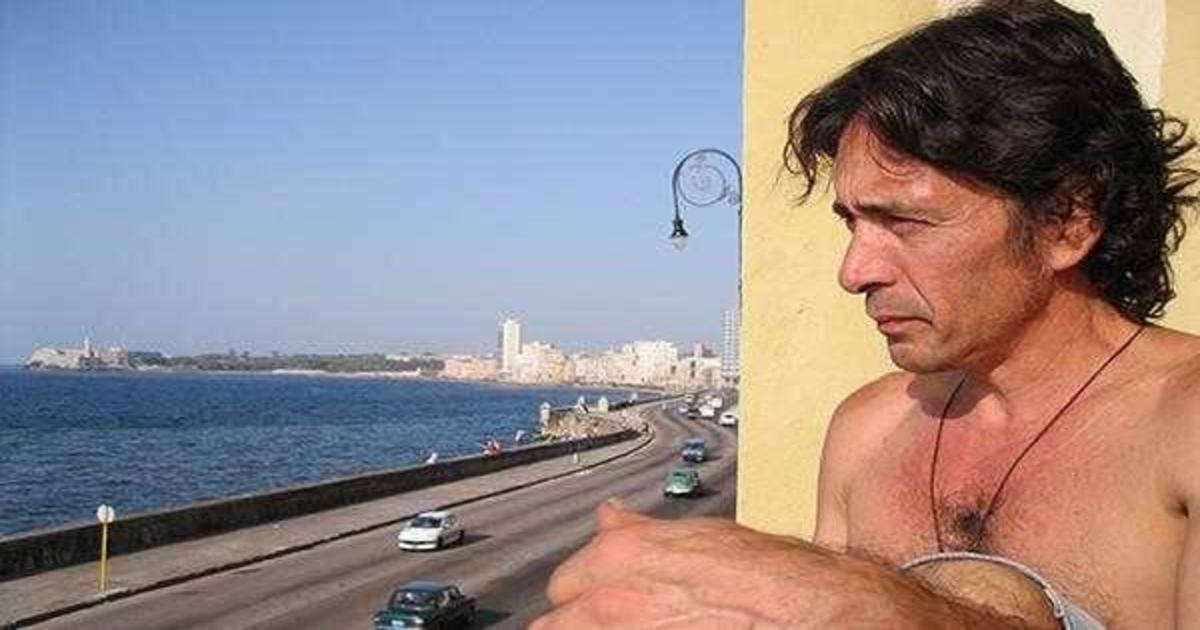
Invitado El Escritor Omar Pérez López Al Espacio Literario “Lecturas En Tiempo” – Voz Habanera. See also: Here’s What The Sons Of Cuba’s Revolutionary Icons Are Doing Today (cubajournal.co)
We hit it off immediately. He was a fascinating, unassuming man; honest, unusually so! His humor ranged from jesting to irony but never snubbing. His wit made me laugh unabashedly. We exchanged political thoughts too, of course. While he was not a Marxist, he thought like a revolutionary—gently urging humans he could reach to develop equalitarian and harmonious forms of living. Omar—carpenter, poet, translator, musician, teacher—combined various philosophies, from Marxism to Buddhism, existentialism and atheism.
“The issue is to become aware. Facts and literacy is not the essential. But awareness! That can occur with anyone, literate or not, if you search,” he said. And he viewed laughter as a release from the foolishness man commits, from the absurdities of reality.
As the first rays of sun sparkled on the sea, we were exchanging personal information. I told him of my disunited background; the meaning his homeland had for me—a revolution for justice, the Bay of Pigs, Che Guevara. Omar spoke of his mother but did not mention his father. I asked about that.
“Now that you ask, I must tell you the truth. He was Che,” Omar replied straight away.
You’re kidding. No I’m not. It can’t be. Yes, it can. The smile, the eyes and deep brown brows!
I had quickly grown to like Omar, and I loved his father for his thoughts and actions without having ever met him. I knew Che, though, for his ethics, which I embraced. And now, the wizard of coincidence had brought me to his son’s house. Yet another reward!
Omar is Everyman. In that sense: like father like son. Omar inspires and enlivens. He urges us on to feel good, to think positively, to take steps we might be hesitant to take. In ensuing months, he would ask me, “Ron, could you not wait a day or so to save humanity?” And, instead of criticizing me for my pointing finger, he would say, “Ron, you are a very good policeman of error…Do not eat the heart!” Ron Ridenour: Solidarity and Resistance: 50 Years with Che, VI Che’s Poet Son Omar
[Jette thinks Omar’s words of wisdom do speak to and of me. Omar and Jette are right.]
Omar did not find out that his father was Che until he was 25. He was already a translator and poet. Omar’s mother and Che had him out of wedlock. Che had five other children with two women he had married. He also wrote poetry.
Upon leaving Cuba, Omar handed me a hatchet he had made of a tree branch and flint stone—a farewell-until-we-meet-again present. It hangs in my library by a red banner emblazoned with Che´s portrait painted by Jim Fitzpatrick.
(Dedicated to colleague-friend-comrade Finian Cunningham)
[i] I lived on Vestmannaeyjar in the summer 1981 fishing with a crew of a dozen Icelanders and loading large ships with fish. I had recently interviewed the first female president in the world, peace activist Vigdís Finnbogadóttir (1980-96). She is now UNESCO’s Goodwill ambassador. You can see parts of my interview midway in this piece: Icelanders: Most Peaceful and Politically Conscious of People – This Can’t Be Happening! (thiscantbehappening.net)
See also: Ingólfr Arnarson – Wikipedia; www.sourcinginnovation.com/archaeology/Arch07.htm;
RON RIDENOUR, member of TCBH, retired professional journalist, anti-war and civil rights activist; author of 12 books: “The Russian Peace Threat: Pentagon on Alert”. https://www.amazon.com/Russian-Peace-Threat-Pentagon-Alert/dp/0996487069; six books on Cuba, (“Backfire: The CIA’s Biggest Burn” among others, “Cuba at Sea”); “Yankee Sandinistas”, “Sounds of Venezuela”. www.ronridenour.com; ronrorama@gmail.com.
